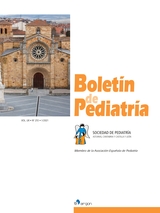Síncope en la edad pediátrica
M.T. Viadero Ubierna , J. Garde Basas
Bol. Pediatr. 2021; 61 (255): 42 - 52
Introducción. El síncope es la pérdida brusca y transitoria del nivel de conciencia y del tono postural a consecuencia de una hipoperfusión cerebral transitoria. Desarrollo. Se trata de un síntoma muy frecuente en la edad pediátrica, sobre todo en la adolescencia y que, en ocasiones, genera gran angustia entre las familias e inseguridad entre los profesionales, abusándose de exploraciones y tratamientos innecesarios. En esta revisión daremos las claves para hacer un correcto diagnóstico diferencial, analizaremos los datos de alarma que nos deben hacer sospechar que no nos encontramos ante un cuadro benigno, veremos qué recomendaciones debemos dar a las familias y a los pacientes y cuándo remitir al especialista. Nuestros objetivos con esta revisión: saber enfocar correctamente el síncope en la edad pediátrica; tranquilizar cuando se trate de un proceso benigno e identificar los casos de potencial gravedad. Conclusiones. En la edad pediátrica los síncopes son en su mayoría benignos. El síncope reflejo, concretamente el vasovagal, es el más frecuente. La historia clínica es la clave para el diagnóstico. Debemos estar especialmente atentos a los datos de alarma en la historia y en el electrocardiograma que nos puedan indicar la presencia de una cardiopatía subyacente. Los niños con una historia compatible con síncope vasovagal, sin antecedentes familiares de riesgo y con electrocardiograma normal no precisan valoración cardiológica adicional. Entre los aspectos más importantes del tratamiento del síncope reflejo están formar y tranquilizar al niño y a la familia.
Syncope in the pediatric age
Introduction. Introduction. Syncope is the sudden and transient loss of the level of consciousness and postural tone due to a transient cerebral hypoperfusion.
Development. This is a very frequent symptom in the pediatric age, above all in adolescent age and which, at times, generates great anxiety among the family and insecurity among the professionals, unnecessary examinations and treatments being abuse of. In this review, we present the keys to making a correct differential diagnosis. We analyze the alert data that should lead us to suspect that we are not facing a benign picture. We will see what recommendations we should give the family and patients and when to send them to the specialist. Our objectives with this review are: to know how to correctly approach the syncope in the pediatric age; to reassure when it is a benign process and to identify the cases having potential severity.
Conclusions. Syncopes are mostly benign in the pediatric age. The reflex syncope, specifically the vasovagal one, is the most frequent. The clinical history is key for the diagnosis. We should be especially alert to the alarm data in the history and in the electrocardiogram that can indicate the presence of an underlying heart disease. Children with a history consistent with vasovagal syncope, with no family background of risk and with a normal electrocardiogram do not require additional cardiological evaluation. Among the most important aspects of treatment of the reflex syncope are those of informing and assuring the child and the family.
Artículo completo (PDF) (142 kb.)
- Cardiología
Buscar en el boletín
Año 2021, Volumen 61, Número 255

Boletín completo en PDF (3366 kb.)